
Joe Eichler Timeline 1: Eichler Homes Gets Off to a Great Start
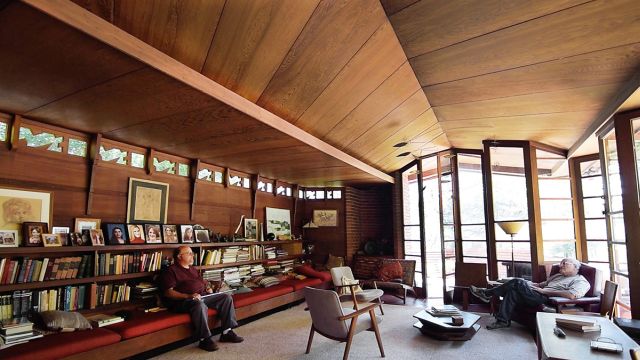 |
Progressive architects, planners, and progressives of all stripes knew exciting things would be coming as soon as World War II ended.
New, open-planned, glass-walled homes would change the way Americans lived. It would be a new world of modern housing for the masses.
Not one of these thinkers would have fingered Joe Eichler, formerly in butter and eggs, as the man who would build more modern homes for Americans than any other single individual – 11,000 homes in 24 years.
Yet by 1950 he was winning awards for his modern tracts – and seeing them exhibited in museums. Four years after he entered real estate, Joe was a star – and people were already calling his homes 'Eichlers.'
Over the next few months, beginning here, we will be running a five-part series that provides a timeline to the Eichler story. Think you know the history of Eichler and his homes? You may be surprised.
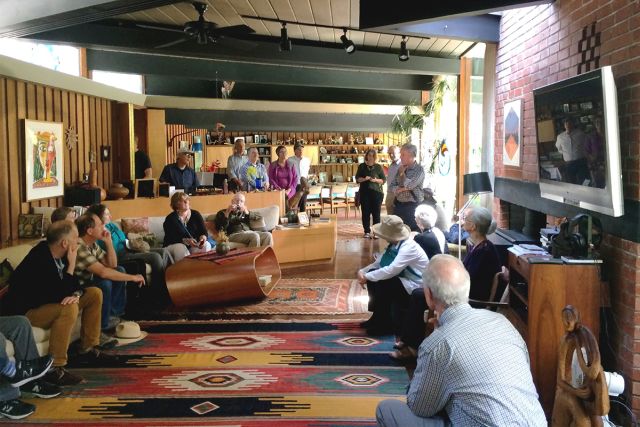 |
1900. Joe Eichler is born in New York City to parents who run a small toy store in Manhattan. He studies business at New York University and then works for his father-in-law’s financing firm.
1927. Joe and his wife, Lillian (Moncharsh), move to San Francisco when Eichler’s father-in-law takes over Nye & Nissen, a firm in the dairy and egg business. Eichler works for the firm in finance and management. He quits during World War II, when officers of the company are convicted of over-charging the government. Joe is not charged in the scandal.
1943-1945. Eichler rents and lives in Frank Lloyd Wright’s Bazett House in Hillsborough with his wife and two sons, Ned and Dick. It’s one of Wright’s compact Usonian houses, designed for everyday families, and it clearly inspires Joe, who had never shown interest in modern architecture before. Joe runs a small deli in Burlingame, Peninsula Farmyard.
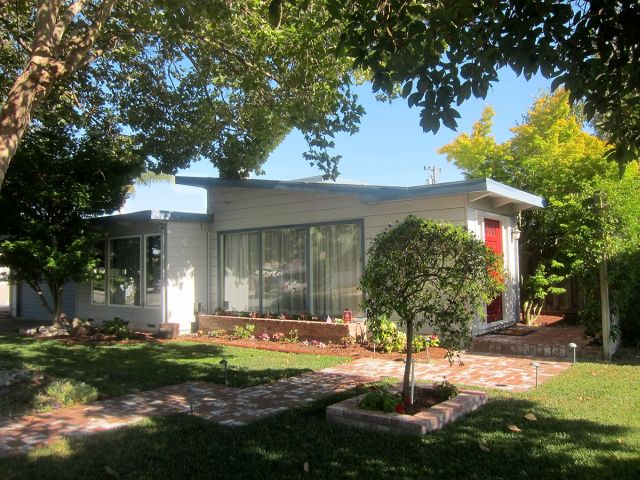 |
1947. Eichler forms Sunnyvale Building Co., initially selling small prefabricated homes to owners with lots.
1949. Eichler builds his first homes before hiring architects, about 300 of them in several subdivisions. Sunnyvale Manor I and Sunnymount Gardens in Sunnyvale were built using off-the-shelf modern plans.
1949. Eichler hires a building designer, rather than work from standard plans. History recalls his name only as 'Castor.' He designs homes for the subdivisions University Gardens, in Palo Alto; then Stanford Gardens, in Menlo Park. The 50 or so University Gardens homes are the first Eichlers in Palo Alto, where Joe will go on to build thousands.
1949. Eichler introduces radiant heat in Stanford Gardens. Hot water pipes encased in a concrete slab will become a constant feature in his homes.
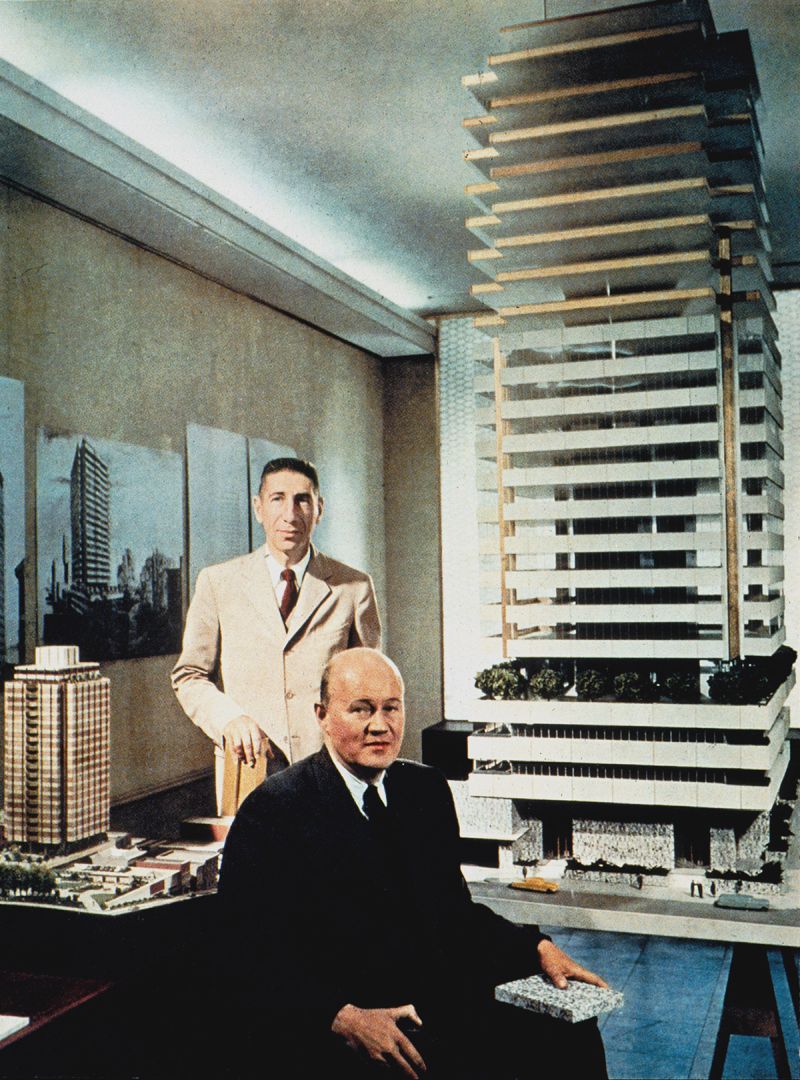 |
1949. Eichler hires architects Anshen and Allen to design a home for himself and his family in Atherton. The home, which is built in 1951, has strong affinities with the Bazett house. The Eichlers live there till 1964.
1949-1950. Eichler contracts with Anshen and Allen to design tract homes for the second phase of Sunnyvale Manor in Sunnyvale. The homes sell quickly, at $9,400. Eichler continues to use Bob Anshen and Steve Allen for his next subdivisions, El Centro Gardens, Green Gables, and Greer Park in Palo Alto; and Atherwood in Redwood City. The homes, based on the initial AA-1 plan, are generally T-shaped with three compact bedrooms. They are Eichler’s first post-and-beam homes, with walls of windows facing the backyard.
1949 or 1950. Claude Oakland, an architect with Anshen and Allen, works on the earliest Eichler models as a member of the firm, and soon is 'principal designer' for Eichler Homes, a job he will continue while Anshen and Allen retain the Eichler account. As a designer with Anshen, and later on his own, Oakland will design more Eichlers than any other architect.
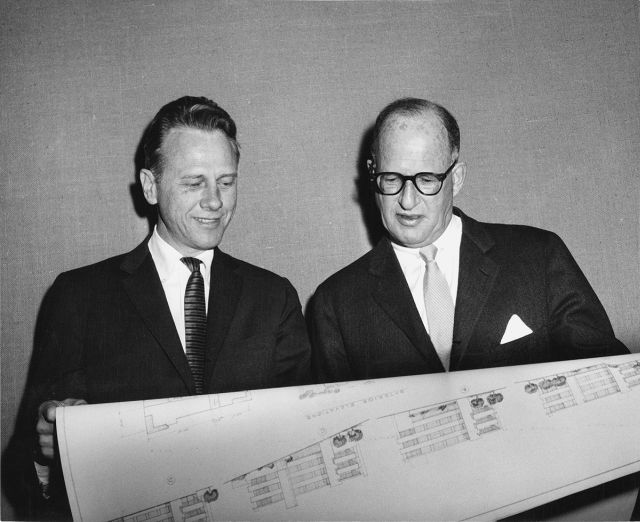 |
1950. Green Gables wins note as 'subdivision of the year' in Architectural Forum magazine, and the Anshen and Allen designs are exhibited at the San Francisco Museum of Art.
1950. Eichler experiments with innovative street plans at his Fairmeadow, El Centro Gardens, and Greer Park neighborhoods in Palo Alto. Networks of circular streets, streets with broad cul-de-sacs, and other arrangements break the grid and are designed to slow traffic and make tracts more attractive and people-friendly. Anshen and Allen design the first of these layouts. Later Eichler will bring in landscape architects, including Thomas Church and Kathryn Stedman.
1950-1951. Eichler builds his first custom homes. Like many of the several dozen custom and semi-custom homes Eichler will build during his career, this is built on the residential portion of the Stanford campus for a professor. The home is low-slung and woodsy. Many of the custom homes resemble tract Eichlers, but some depart from the look.
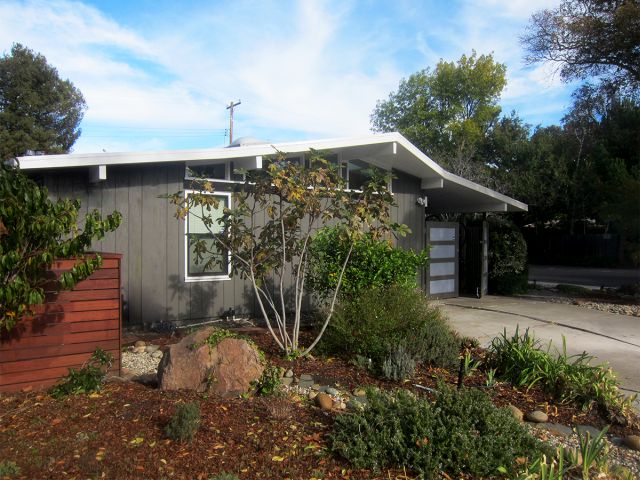 |
1950s-mid 1960s. Eichler Homes is a bit of a family firm, employing at various times Joe’s sister, Esther, and brother, Al, sons Ned and Dick, Joe’s brother-in-law in sales, and Joe’s sister-in-law in mortgage processing, among others.
1950. Jim San Jule, a social and housing activist, joins Eichler Homes as its first marketing manager, introduced to Joe by San Jule’s friend Anshen. San Jule later credits himself and Bob Anshen as founders of the firm, thanks to an “informal arrangement” with Joe. Neither were owners.
1951-1954. Eichler and his marketing director and close friend Jim San Jule lobby the Federal Housing Administration to drop lending restrictions for homes that are modern in style. The ban is eventually lifted. Eichler and San Jule, a committed housing activist, also lobby to end policies that impede home loans to black people.
Learn more about Joe Eichler in the second article in our series, Joe Eichler Timeline 2: Eichler Homes Expands.
- ‹ previous
- 356 of 677
- next ›



